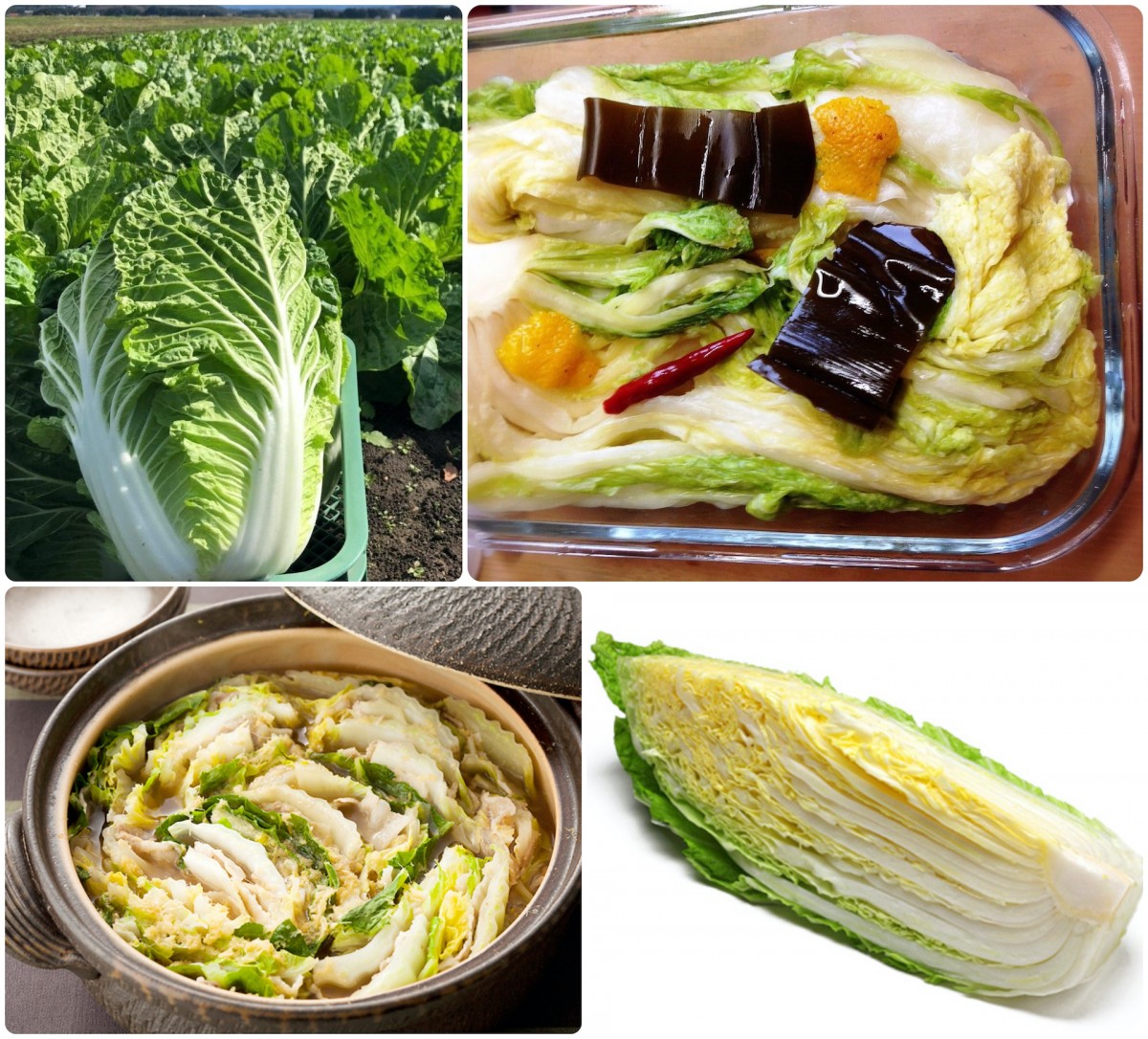Walk in to any supermarket in Japan in January and you’ll find compact wedges and bulbous whole heads of HAKUSAI (Chinese cabbage; B. rapa ssp. Pekinensis). Most Asian groceries throughout the world sell hakusai in the winter. I hope you’ll buy some and join me in making pickles, soups, nabé and more.
After buying hakusai, wrap whatever portion you won’t be using immediately in paper towels and then newspaper. Paper towels help prevent leaves from drying out and keep newsprint ink from smudging the hakusai. Properly stored (preferably upright), hakusai will keep in a cool spot for many weeks… providing ample opportunity to enjoy a wide range of dishes prepared with it. Take the tsukai tsukusu approach: use what you have fully.
Start by peeling back some of the outer leaves that may be bruised — they make fine “lids” to place on top of shio-zuké pickles. I make a pickle from coarsely chopped bits of the tough hakusai core, liberally massaged with salt. After placing in a pickle press with kelp, citrus peel and tōgarashi chili, I lay the bruised outer leaves on top and apply pressure. Within a day, I have a sprightly tsukémono as my reward.
Next, set aside unblemished, full-sized leaves to make Senmai Nabé, layering them with thin slices of pork belly and carrot strips. The multi-layered savory meat-and-cabbage gets simmered table side and eaten with a citrusy soy dip sauce. For those who like their nabé hot pots spicy, add yuzu koshō to the dipping sauce: makes for bright “fire.”
Still have hakusai left? Tender center-of-the-head segments are perfect for quick stir-fries and soups. And… coming back full circle, slice whatever remains into thin shreds for tsukémono pickles. This time include other veggies such as cucumber, carrot, and radishes. Salt and massage. Once the liquid in your pickle press has risen, add strips of kombu and a healthy measure of fresh ginger juice (pressed from grated ginger). If you have the patience, wait a week, and let the mixture start to ferment (you’ll see small bubbles forming at the edge). If not, enjoy the mix as an Impatient Pickle.
Stay connected.
I’m looking forward to your comments on the items I post to my Facebook page!
Follow me on Twitter!
I do hope you like it!
Elizabeth Andoh A Taste of Culture Culinary Arts Program Setagaya-ku, Tokyo 158-0095, Japan


Comments